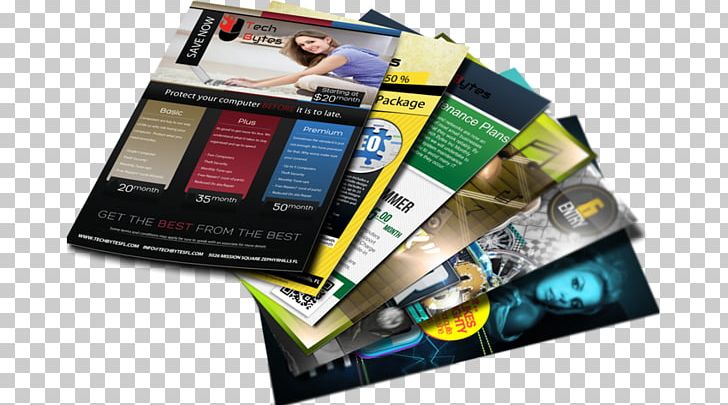
Your product or brand can be promoted using influencer marketing. This is not only helpful for increasing sales, but it can also create awareness about your brand. There are many ways to measure the impact of influencer marketing efforts. You must set clear goals. These goals should align with your overall campaign objectives. For example, you may want to increase your website traffic or create a new audience.
You can track your influencer marketing campaign using a few metrics. These include the number of likes, comments, and followers you have. You can also track how many new Instagram or YouTube followers you gain, how many subscribers you obtain through email newsletters, as well the daily unique visitors to the website. These numbers will allow you to calculate your influencer marketing ROI.
One of the most useful ways to track your campaign's ROI is by using a third-party software. Google Analytics, for instance, is a fantastic tool to track website traffic. It can help you determine where your site originated and how long it took to navigate through the website. Several of the top social platforms offer similar capabilities. Some of these include Facebook Insights and Pinterest Analytics.

A dedicated dashboard for all your social media posts is another way to measure your influencer marketing ROI. This allows you to track your influencer's posting habits and determine how many impressions each post receives. You can then justify your budget with this information.
The number of backlinks you have to your site created after your campaign starts can also be used as a measure to assess your influencer-marketing ROI. Backlinks can improve your site performance and your search engine ranking. Backlinks are typically established via guest posting or sponsored content from other sites. These numbers will help you plan future campaigns and measure your marketing efforts.
Finally, consider your influencer's skills. A great influencer can earn you more money if they are able produce quality content than you would spend on the products they recommend. Therefore, it is important to have an influencer with the right skill set.
Keep in mind, however, that you may need to spend a lot of money on your influencer campaign. In general, an influencer campaign will return $5-6 for every dollar spent. The results you get will depend on what type of influencer and how much money you spend.

Your influencer marketing ROI may be determined by how many sales your campaign has generated. Similarly, the number of people who ask about your influencer's recommended products can be used to estimate how many people purchased your product.
FAQ
What is affiliate marketing?
Affiliate marketing is an internet business model in which you refer customers to other products and services. The product owner pays you when someone buys from you.
Referrals are the basis of affiliate marketing. To get people to buy from your affiliate marketing, you don't have any special requirements. Refer them to the website.
There are many ways to make money, without having to do any selling. It's easy to sell just as much as it is to purchase.
In minutes, you can also set up an affiliate account.
Referring as many people as possible will increase your commission.
There are two types.
-
Affiliates who own their websites
-
Affiliates who work in companies that offer products or services.
What should you know about printing advertising?
Print advertising is a great medium to communicate with customers. It is used by many companies for promoting products and services. The key objective is to capture the attention of the consumer.
Print ads are typically one page long and include text, images, logos and other graphics. Print ads can also contain sound, animation, videos, and hyperlinks.
These are the main types of print ads:
1. Brochures - Large format printed brochures are used to draw people in to stores. Brochures can often be adorned with brightly colored images and eye-catching designs.
2. Catalogues are smaller versions than brochures. These are usually sent to customers who request information about specific items.
3. Flyers - These small pieces of paper are distributed at events like fairs and concerts. These flyers are usually free, but they must be purchased if given to retail outlets.
4. Posters - These flyers can be larger than the ones you see on the flyer. They are often displayed on walls, fences, or buildings. These are often created with computer software programs to grab the attention of passersby.
5. Direct mail – These are direct mail letters and postcards sent to potential customers. These are sent to customers periodically by businesses to remind them about their business.
6. Newspaper ads - These ads are published in magazines and newspapers. These ads are often quite long and include both text and images.
What is an advertisement buyer?
Advertisers buy advertising space on television, radio, and print media.
An advertiser pays for the time they want their message to appear.
They are not necessarily looking for the best ad but rather what is most effective at reaching their target market.
Advertisers might have certain demographic information about potential customers. This could include age, gender income level, marital status and occupation as well as hobbies, interests, and so on.
The advertiser can use this data to determine which medium will work best for them. An example is direct mail that appeals to older people.
Advertisers also look at the competition. Advertisers may decide to place their ads in close proximity to similar businesses.
Advertisers also need to consider their budget size and how long they will spend it before it expires.
How do I choose my target market?
Begin with you and your closest friends. Do you not know where to start? Ask yourself "Whom do I want to reach?"
Ask yourself these questions: Who do you consider the most influential in your industry? What problems do they deal with daily? What are their top talents? You can find them online.
Return to the beginning. Why did your start? How did you solve the problem?
These answers will help to identify your ideal clients. These answers will help you understand your ideal clients and what motivates them to buy from you.
Look at your competitors' sites and social media pages for clues as to who they cater.
Once you have identified your target customers you will need to choose the channel to reach them. A website might be created to reach home buyers, for instance, if your business provides services to agents in real estate.
A blog that targets small-business owners could be a possibility if you are a software provider.
You could also create a Facebook account for teens if you sell clothing. Or if you're a restaurant owner, you could set up a Twitter account for parents looking for kid-friendly places to eat.
It is important to remember that there are many methods of getting your message across.
What is the cost of advertising on social media?
Social media advertising is expensive if you choose to take this route. You will be charged monthly depending on your time on each platform.
Facebook - $0.10 Per 1,000 Impressions
Twitter - $0.20 per 1,000 impressions (if you tweet)
Linkedin - $0.30 for 1,000 impressions if your send out invitations
Instagram - $0.50 per 1,000 impressions.
Snapchat - $0.60 for 1,000 impressions ($0.40 Per User)
YouTube - $0.25 Per 1,000 Views
Tumblr - $0.15 per 1,000 impressions for text posts.
Pinterest - $0.05 per 1,000 impressions per month
Google + $0.15-$0.20 for 1,000,000 impressions
Tumblr: $0.15-$.20 per 100,000 impressions
Vimeo - $0.20- $0.25 per 10,000 impressions
Soundcloud - $0.20 to $0.0.25 per 1 Million Plays
StumbleUpon - $0.20 -$0.25 per 1 billion pageviews
Digg: $0.20 – $0.25 per 1,000 diggs
Reddit – $0.20-$0.25 Per 1000 Comments
Wordpress - $0.20--$0.25 per 500 comments
Flickr - $0.20 -- $0.25 per 5,000 photo uploads
What should you know about radio advertising
Understanding the interactions between different media is essential. Remember that all media types are complementary, not competing.
Radio advertising is best when used in conjunction with television. Radio complements television advertising by reinforcing key messages or providing additional information.
Radio listeners may find TV commercials too long. Radio ads are generally shorter and less expensive.
Advertising: What does it mean?
Advertising is an art. Advertising isn't just about selling products. It's about making emotional connections between people, brands, and each other.
Advertising is about storytelling and using images to communicate ideas.
Communicating clearly and persuasively is key. Also, you must share a story which resonates with your target markets.
Advertising is therefore distinct from other forms communication such as writing and public speaking.
When you create a winning ad campaign, it is creating your brand identity.
This is how you make yourself memorable. You are someone people remember.
Statistics
- In 1919 it was 2.5 percent of gross domestic product (GDP) in the US, and it averaged 2.2 percent of GDP between then and at least 2007, though it may have declined dramatically since the Great Recession. (en.wikipedia.org)
- Nonetheless, advertising spending as a share of GDP was slightly lower – about 2.4 percent. (en.wikipedia.org)
- Worldwide spending on advertising in 2015 amounted to an estimated US$529.43 billion. (en.wikipedia.org)
- Google will display whichever ad type (CPM or CPC) is expected to earn more revenue for the publisher, which is in Google's best interest since they take a 32% share of the revenue. (quicksprout.com)
External Links
How To
How to run ads that are paid
Paid Advertising is any marketing activity that involves paying money. This could include advertising in magazines and newspapers, buying ads space on websites, or hiring someone to promote your business online. Paid advertising can include display advertising, email marketing or mobile app promotion.
Your campaign should be cost-effective and deliver the desired results. It is also important to determine if you will get enough return on your investment (ROI).
Before you begin a paid advertisement campaign, first determine if there are potential customers for your product/service. If you don't know where to start, try free advertising such as posting flyers around your area, making announcements at school or sharing your message via social networking sites.
Knowing your target audience will help you decide the best way to reach them. If you are selling organic food, for example, you might want to advertise in local newspapers classifieds. For cosmetics sales, it might be more advantageous to advertise on radio and TV.
After you have determined who you want, you need to figure out how much money you can afford. There are many ways you can calculate your budget. One method is to divide the total amount you plan to spend into daily, weekly, monthly, quarterly, or yearly amounts. A spreadsheet program is another option.